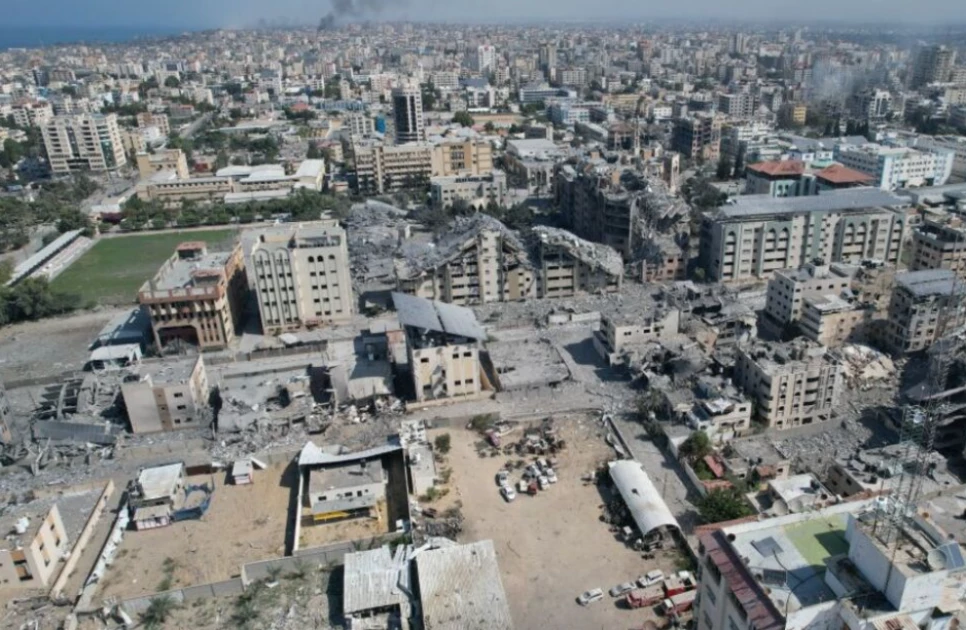OPINION: The impact of the Middle East crisis on East Africa’s supply chain

An aerial view of destroyed buildings following Israeli airstrikes in the Al-Rimal neighborhood of Gaza City on Oct. 12, 2023.

Audio By Carbonatix

The global supply chain has always operated on a delicate
balance, frequently tested by shocks ranging from pandemics and political
upheavals to climate-related disasters. Yet, few disruptions in recent memory
have had as broad and unpredictable an impact as the ongoing crisis in the
Middle East.
What began with the October 7, 2023 attacks, where Hamas-led
militias killed around 1,200 people in Israel and took nearly 250 others
hostage, has since escalated into a complex regional conflict involving Gaza,
Iran, Israel, and Yemen’s Houthi rebels. The fallout has not been limited to
the battlegrounds. It has spilled over into global commerce, disrupting
critical trade arteries that connect continents and economies.
East Africa, which relies heavily on global maritime trade for
its essential imports, is now grappling with the ripple effects of this crisis.
The Red Sea, a key shipping corridor for cargo destined for ports like Mombasa
and Dar es Salaam, has become increasingly perilous.
Attacks by the Houthi militia on commercial vessels have
forced global shipping lines to divert their fleets around the Cape of Good
Hope. This rerouting adds significant time, sometimes weeks, to delivery
schedules and has driven up shipping costs by more than double in many cases.
Delays are now commonplace, with cargo arriving up to 15 days
late, leading to congestion at regional ports and uncertainty for importers and
consumers alike.
At the same time, the cost of securing maritime shipments has
soared. Shipping and marine insurance premiums have increased as risk levels
climb. These rising costs are directly affecting the landed prices of vital
goods such as fuel, fertilizers, electronics, and other industrial and consumer
products.
Fuel prices, in particular, have become volatile.
Approximately one-fifth of the world’s daily oil consumption --some 19 million
barrels— moves through Middle Eastern chokepoints. Any threat to this flow
triggers global price spikes, which trickle down to East African economies in
the form of rising pump prices, higher manufacturing costs, and increased
transport expenses. The net result is inflationary pressure that burdens both
producers and consumers.
Air freight has not been spared either. Although most trade
between the Middle East and East Africa is conducted by sea, a considerable
volume of high-value, time-sensitive, or perishable goods travels by air. These
include pharmaceutical supplies, medical equipment, luxury electronics,
important documents, and perishable items like fresh flowers. The escalating
conflict has led to several airlines, including Ethiopian Airlines, suspending
flights to conflict zones such as Tel Aviv. This disruption in air travel has
constrained cargo movement, leading to losses for businesses that rely on tight
delivery schedules and cold chain logistics.
For manufacturers like Pwani Oil Ltd, the impact of these
disruptions has been both immediate and far-reaching. While the company’s crude
palm oil imports largely come from Malaysia and Indonesia, they are transported
via routes that pass through the Red Sea. With that corridor now increasingly
unstable, the cost and duration of transporting raw materials have surged.
Additionally, rising fuel prices have made local manufacturing
and distribution significantly more expensive. These compounding pressures are
felt not just at the factory gates but also by households across East Africa.
The current crisis is playing out at a time when regional
economies are already strained by post-pandemic recovery, weakened currencies,
and inflation. The convergence of these factors is squeezing profit margins,
destabilizing supply chains, and threatening to push essential goods beyond the
reach of many ordinary citizens.
Yet, even in the face of these headwinds, there is an
opportunity to chart a more resilient path forward. Local manufacturers should
re-evaluate and reinforce their supply chain by exploring alternative sourcing
strategies, building storage capacity, and investing in technologies that can
help in anticipating and managing external shocks. This can be aided by forging
regional partnerships that can reduce exposure to distant crises and anchor
supply reliability closer home.
But the private sector cannot do this alone. Governments and
regional bodies like the East African Community (EAC) must step in to
strengthen regional trade infrastructure. More integrated customs systems,
improved transport corridors, and coordinated logistics frameworks will be key
to minimizing the impact of global crises on local industries and consumers.
While the crisis in the Middle East is real, and its effects
far-reaching, it serves as a stark reminder of the vulnerabilities in East
African systems and the urgent need for proactive strategies.


Leave a Comment